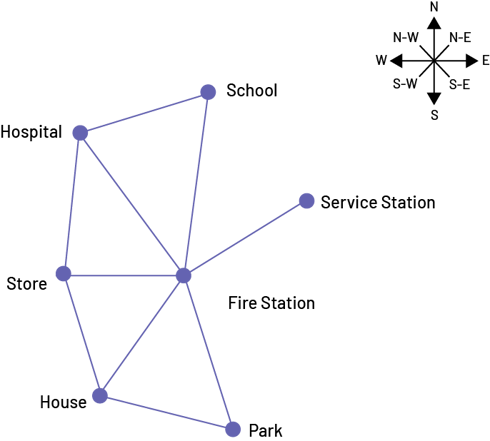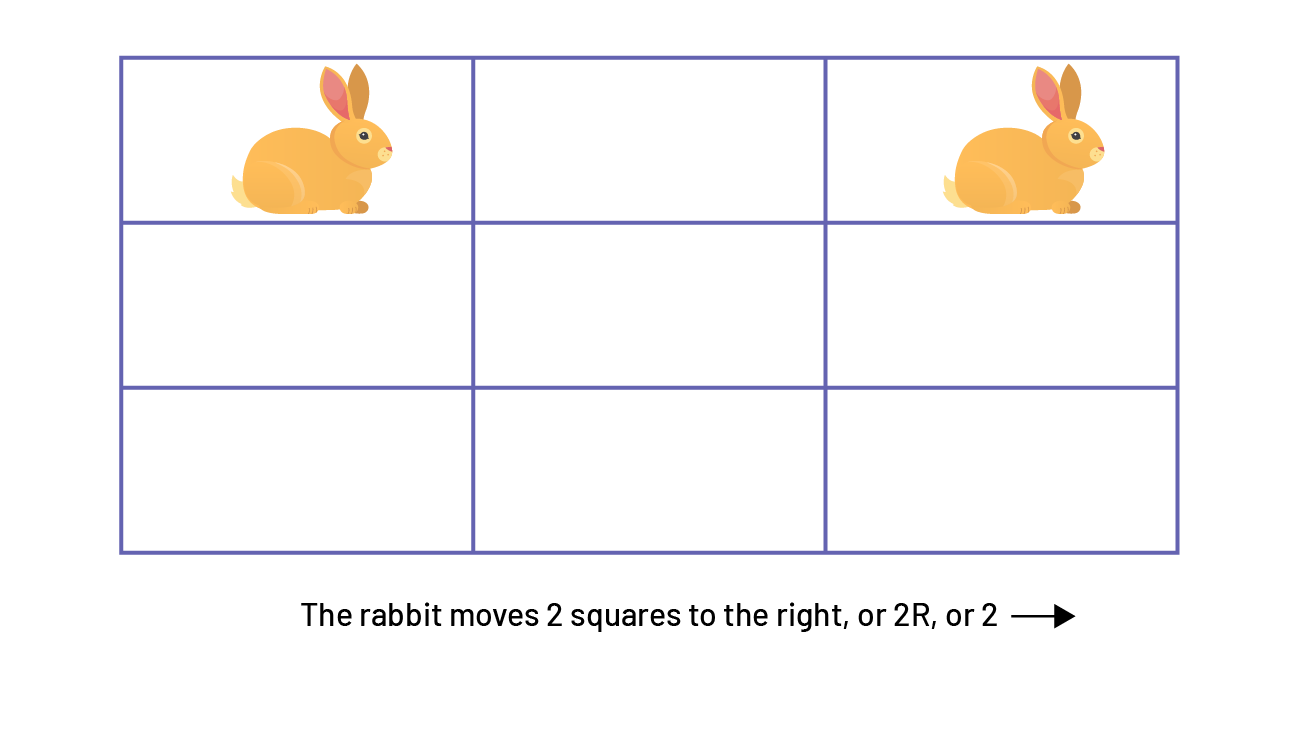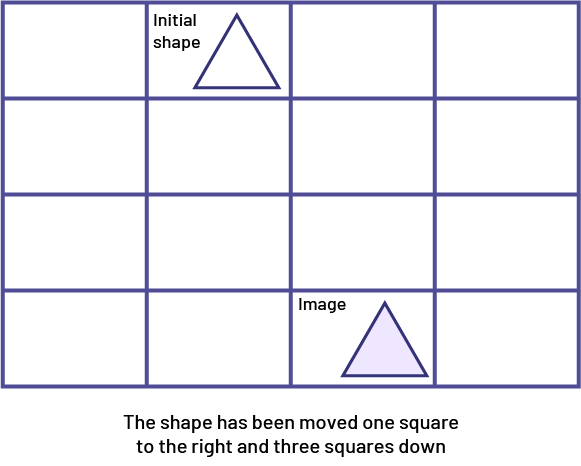E1.4 Give and follow multistep instructions involving movement from one location to another, including distances and half- and quarter-turns.
Skill: Giving and Following Directions
Children gradually recognize the way to get from home to school. For example, they notice a certain business located near their home or a certain restaurant near their babysitter's house. Using these reference points, a child can situate themselves in and move around their environment.
In Grade 3, students give and follow directions involving movement from one location to another, specifying the starting point, the ending point and the direction of travel. They can also specify the position of places in relation to each other using a simple map and vocabulary that describes spatial relationships.
Example
 Image Simple commuting network. The midpoint of the network is the fire station, from this point there is a line to all other locations such as: the gas station, school, hospital, store, and home. The network is supported by a compass.
Image Simple commuting network. The midpoint of the network is the fire station, from this point there is a line to all other locations such as: the gas station, school, hospital, store, and home. The network is supported by a compass.
- To get from the school to the park, I have to go through the fire station.
- The hospital is northwest of the fire station.
- The store is south of the hospital.
Communication, modelling, and storytelling should be used to facilitate the learning of spatial relationship skills. For example, when acting out a story such as Goldilocks and the Three Bears, students use spatial terms (for example, Goldilocks sits on the big chair, and then walks six steps right to the bed). Gradually, students realize that they are in constant relationship with their environment. Teachers can then use the classroom or school as a reference point to create increasingly complex scenarios.
Source: translated from Guide d’enseignement efficace des mathématiques de la 1re à la 3e année, Géométrie et sens de l'espace, p. 58-59.
Skill: Making a Movement
Children arrive at school with prior experience in moving through their environment. Over the years, their vocabulary evolves and allows them to describe the movements with greater precision.
Translation
Prior to Grade 3, students perform translations without knowing that they are translations. For example, they put things away, change the position of various objects, and move from one place to another. Teachers give directions so that the students can move to get an object, go to the washroom, or to the secretary's office.
In Grade 1, students will describe movements in a grid using four directions: right, left, up, and down. They can describe a movement in terms of distance and direction using words or symbols.
Example
 Image A grid with three columns and three rows, a rabbit is in the first box of the first column and another in the first box of the last column.
Image A grid with three columns and three rows, a rabbit is in the first box of the first column and another in the first box of the last column.
In Grade 2, students learn to express movement more precisely. They make horizontal and vertical movements on a grid. They use a tracking system to describe direction (right, left, up, down) and distance (number of squares).
Example
 Image A grid with 4 columns and 4 rows. There is a triangle in the first cell of the second column labeled: “initial shape”. In the last row, third column is another triangle labeled: “shape”.
Image A grid with 4 columns and 4 rows. There is a triangle in the first cell of the second column labeled: “initial shape”. In the last row, third column is another triangle labeled: “shape”.
Source: translated from Guide d’enseignement efficace des mathématiques de la 1re à la 3e année, Géométrie et sens de l'espace, p. 59-61.
Rotation
In Grade 3, the language of half- and quarter-turn parallels the minute hand of an analog clock. A turn may be clockwise (moving in the same direction as the hands of a clock) or counterclockwise (the opposite direction from the hands of a clock).
A full turn is a full circle that results in an object facing in the same direction (for example, start at 12 o’clock, end at 12 o’clock). A full turn clockwise or counterclockwise produces the same result.
A half-turn results in an object facing the opposite direction, (for example, start at 12 o’clock, end at 6 o’clock). A half-turn clockwise or counterclockwise produces the same result.
A quarter-turn results in an object facing either 9 o’clock or 3 o’clock, (for example, start at 12 o’clock, and go a quarter-turn clockwise, and end at 3 o’clock, or go a quarter-turn counterclockwise, and end at 9 o’clock).
Source: The Ontario Curriculum. Mathematics, Grades 1-8 Ontario Ministry of Education, 2020.
